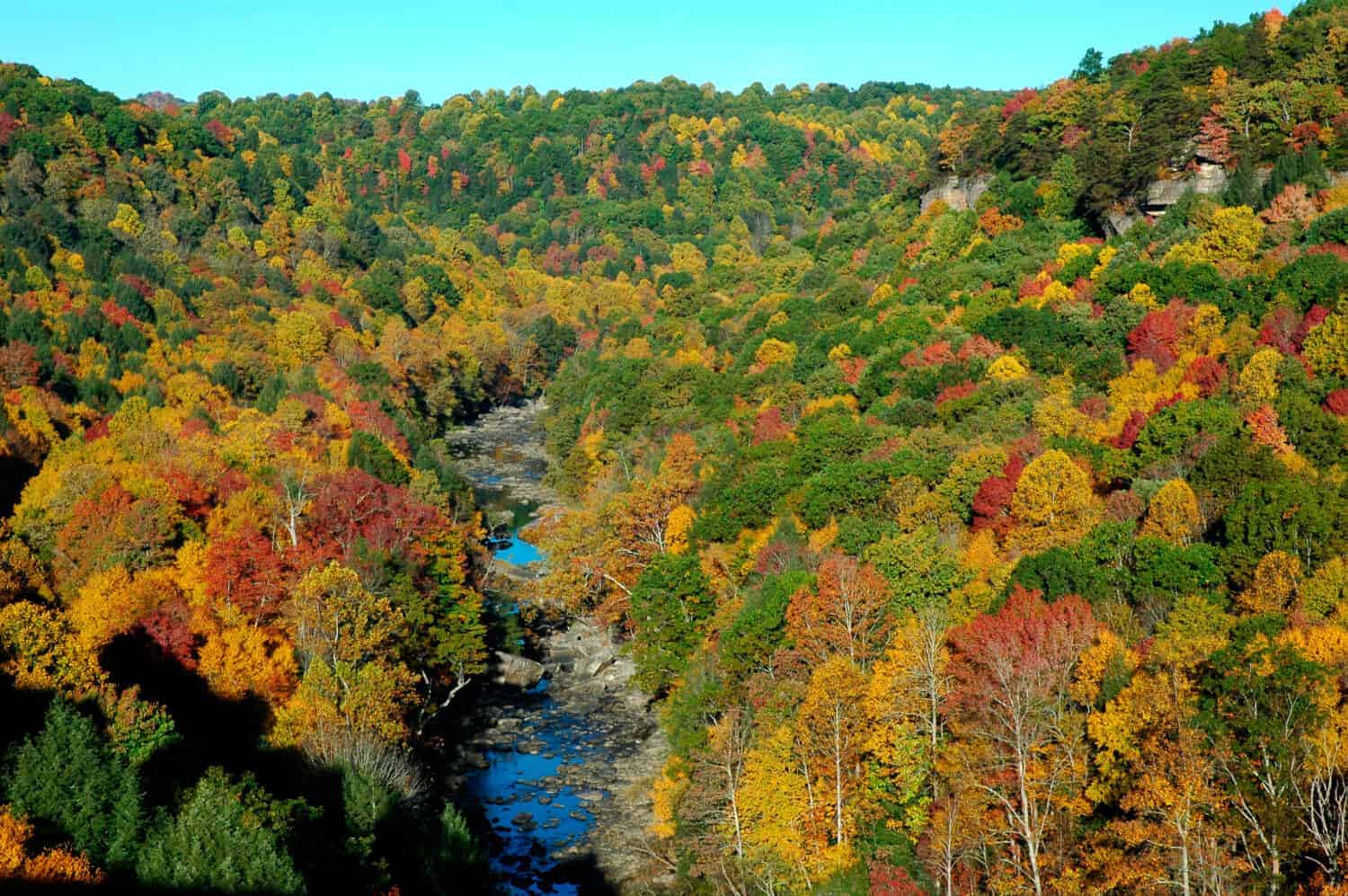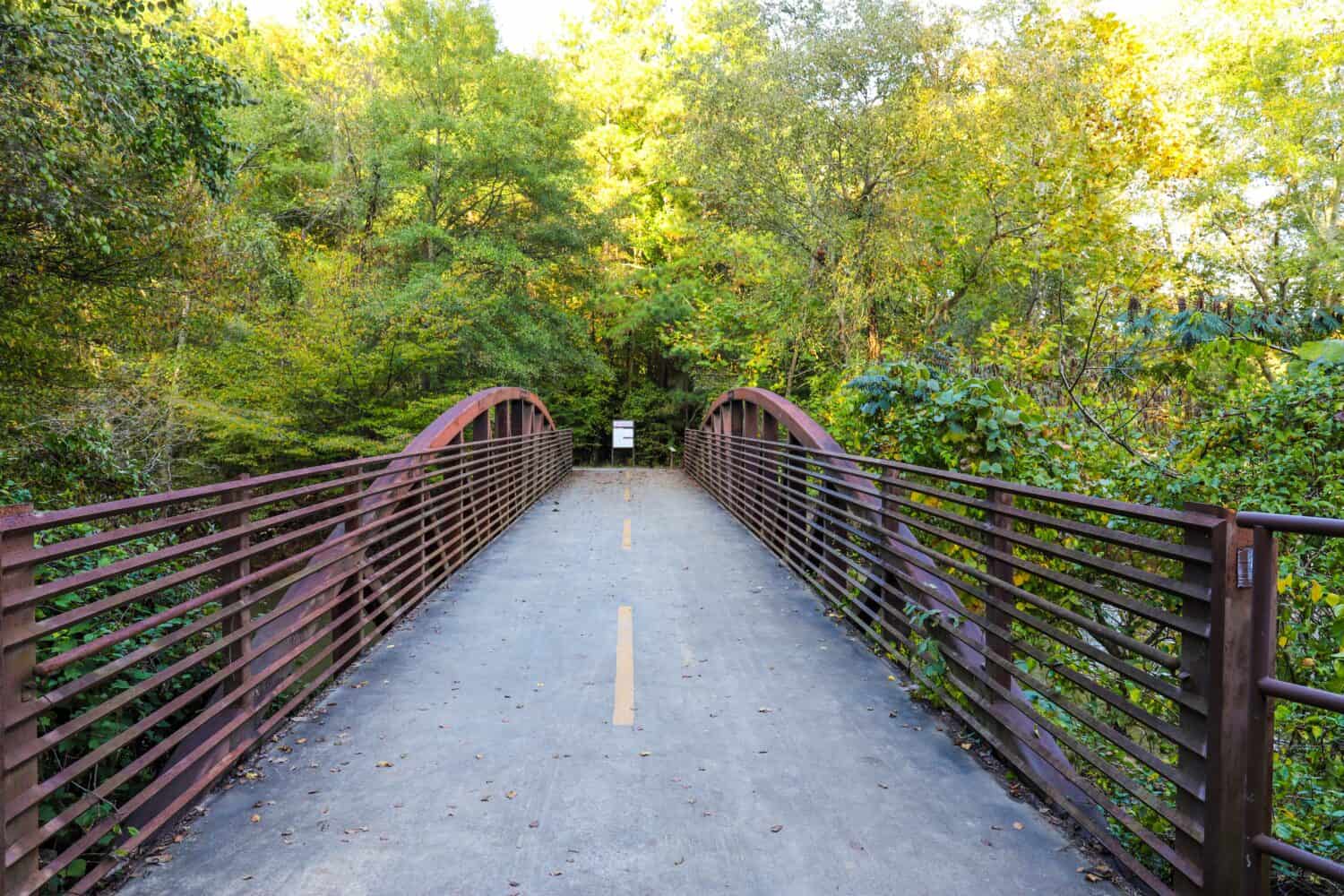The United States is considered one of the world’s 17 most megadiverse nations in terms of the sheer number of its native species of plants and animals — said to be about 200,000 in all. The majority of these species are flora, along with insects and their tiny relatives (like arachnids). As for animals of any size — including mammals, birds, fish, reptiles, amphibians and crustaceans — they account for about 3,000 species, with the bulk of them being fish, mammals and reptiles.
Though determining the exact number of animal species found in America’s 63 national parks and 366 other sites run by the National Park Service is difficult, the sheer geographical variety of such places, and the fact that they are designed as sanctuaries for animal life, suggests that a large number of species may be found within park boundaries. “A fundamental responsibility of the National Park Service is to understand and protect the variety of life the parks support,” according to the NPS website.
To determine the national parks with the most wildlife per acre, 24/7 Tempo reviewed data on species occurrences and park size from the National Park Service. National lands were ranked based on the total number of unique mammal, bird, fish, reptile, amphibian and crustacean species reported within the park per 100 acres. (The NPS notes that “While there are at least 19 naming designations [i.e., memorial parkways, national monuments, national historic sites, etc.], these units are commonly referred to as ‘parks.’”) Data on park size is based on shapefile data from the NPS. Species rarity is based on the number of occurrences of a specific species in all national lands throughout the United States. Data is current as of January 2024.
However, just because a park has a lot of different animals doesn’t necessarily mean that you’ll see them all, or even a few of them. If you’re lucky, you might spot a Sika Deer, a European Rabbit, an offshore Spotted Dolphin or a Long-Finned Pilot Whale, but many of the rarest species in these parks are creatures that like to scurry and hide (lizards, salamanders) or that swim deep in coastal or inland waters, rarely breaking surface. There are some species you should hope you don’t run into, like a poisonous Eastern Massasauga, a Mottled Rock Rattlesnake or a Striped Skunk. (These aren’t the only kinds of dangers you might encounter. These are, for various reasons, America’s deadliest national parks.)
That said, the parks with the highest per-acre density of wildlife offer the best chances of catching glimpses of some. Those parts aren’t necessarily the ones that have the most kinds of animals, though. Biscayne National Park in Florida, for instance, is estimated to be home to more than 1,000 animal species, of which about 700 are aquatic — but the park covers a total of 172,971 acres, including both dry land and water, so the density of its animal population is low. The park with the highest density, on the other hand, is George Washington Memorial Parkway in Maryland, which covers only 6,601 acres but hosts some 478 animal species within its confines. (To learn about the most popular parks, next read The Most Visited National Parks in the US.)
Scroll down to read about the national parks with the most wildlife per acre:
25. Assateague Island National Seashore (Maryland)

- Density of animal species: 1.0 per 100 acres
- Number of animal species: 505
- Park size: 48,757 acres
- Rarest animal species: Sika Deer, Spotted Dolphin, Black Skimmer, Royal Tern, New Jersey Chorus Frog
24. Carlsbad Caverns National Park (New Mexico)
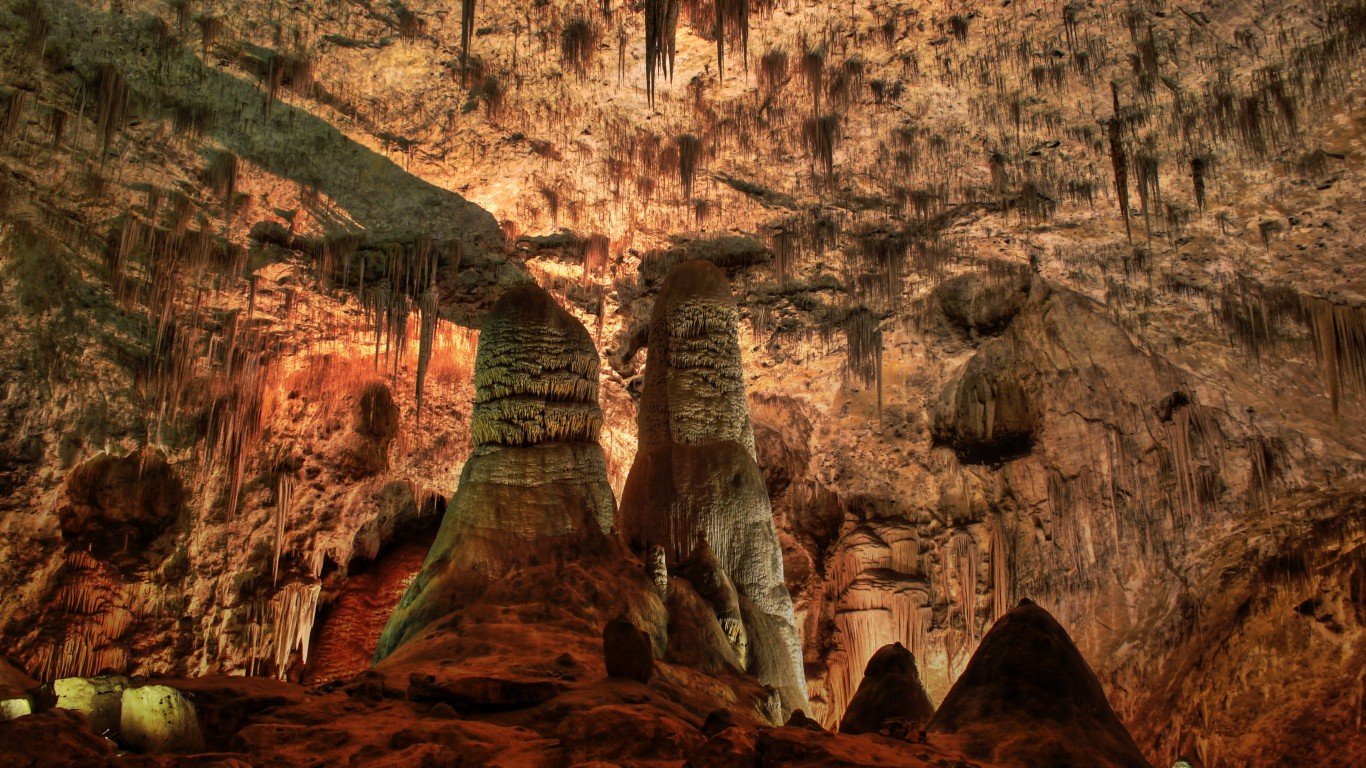
- Density of animal species: 1.0 per 100 acres
- Number of animal species: 491
- Park size: 46,797 acres
- Rarest animal species: Mottled Rock Rattlesnake, Roundnose Minnow, Gray-Footed Chipmunk, Lesser Prairie-Chicken, Tropical Parula
23. Niobrara National Scenic River (Nebraska)
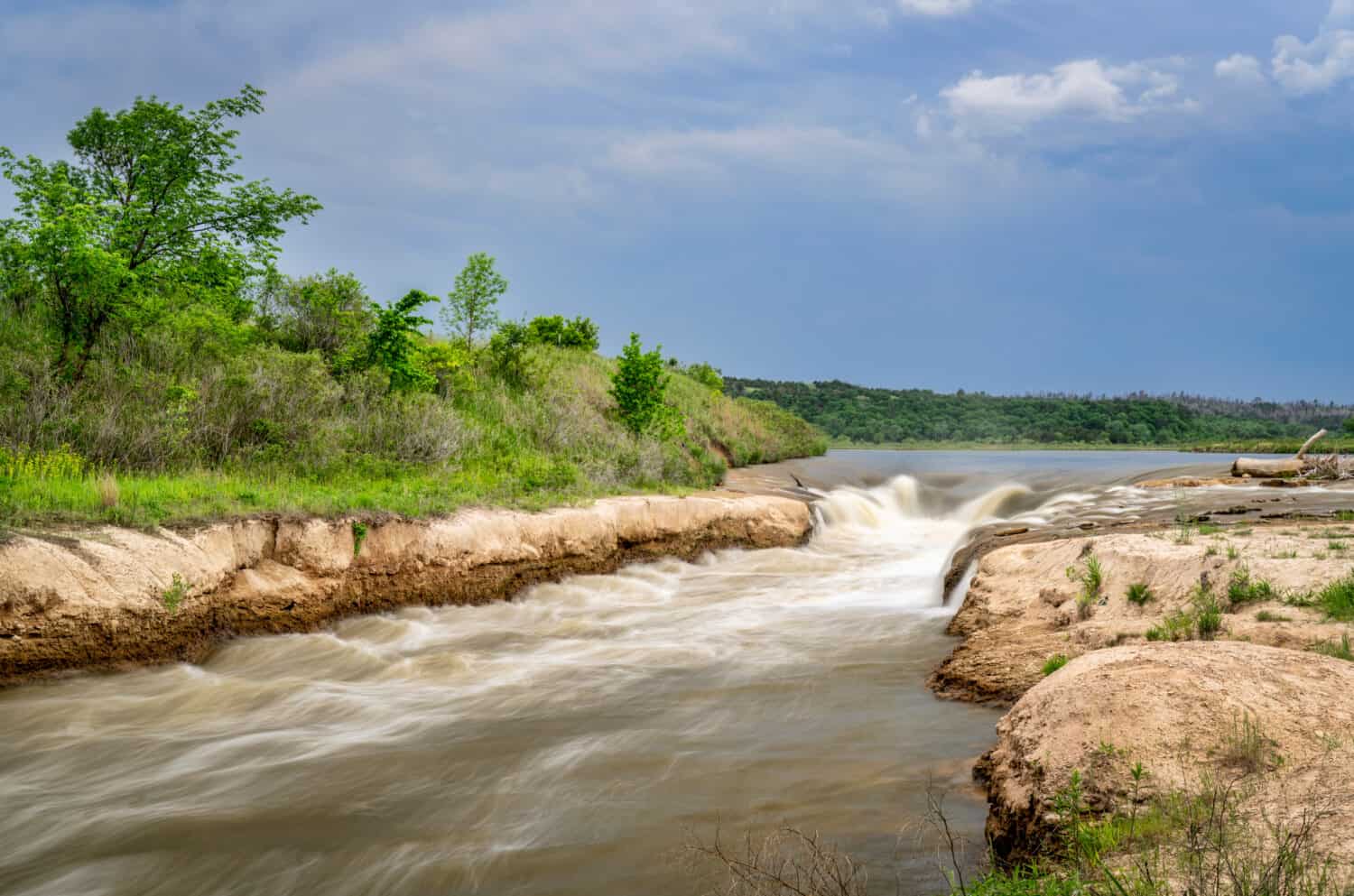
- Density of animal species: 1.1 per 100 acres
- Number of animal species: 332
- Park size: 29,059 acres
- Rarest animal species: Whooping Crane, Greater Prairie-Chicken, Plans Topminnow, Western Silvery Minnow
22. Timucuan Ecological and Historic Preserve (Florida)
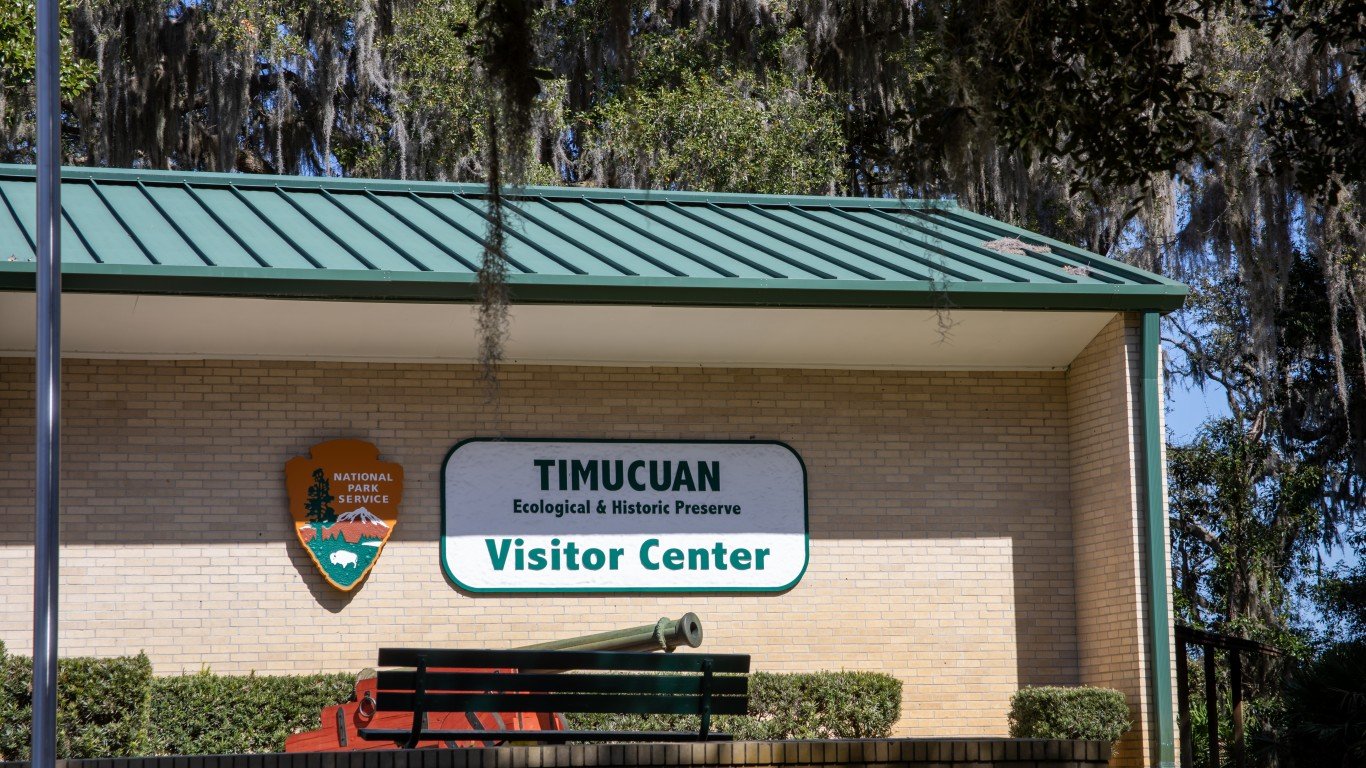
- Density of animal species: 1.2 per 100 acres
- Number of animal species: 538
- Park size: 45,361 acres
- Rarest animal species: Striped Newt, Yellowfin Menhaden Hybrid, Slender Mojarra, Muscovy Duck, Peninsula Cooter
21. Cape Cod National Seashore (Massachusetts)
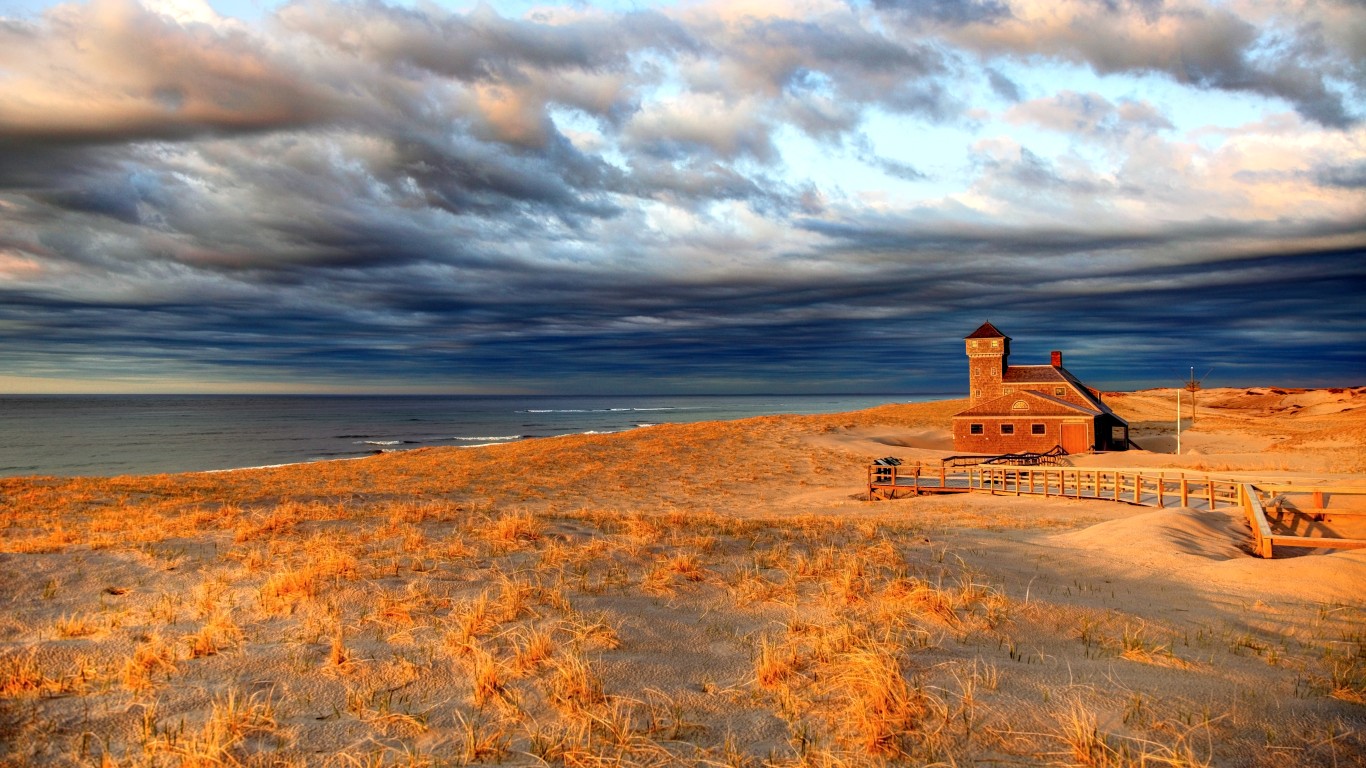
- Density of animal species: 1.2 per 100 acres
- Number of animal species: 527
- Park size: 44,309 acres
- Rarest animal species: Striped Skunk, White-Beaked Dolphin, Atlantic Puffin, Leatherback, Radiated Shanny
20. Cuyahoga Valley National Park (Ohio)

- Density of animal species: 1.2 per 100 acres
- Number of animal species: 390
- Park size: 32,749 acres
- Rarest animal species: Striped Shiner, Brewster’s Warbler, Gray Ratsnake, Northern Leopard Frog, Redside Dace
19. Cumberland Island National Seashore (Georgia)
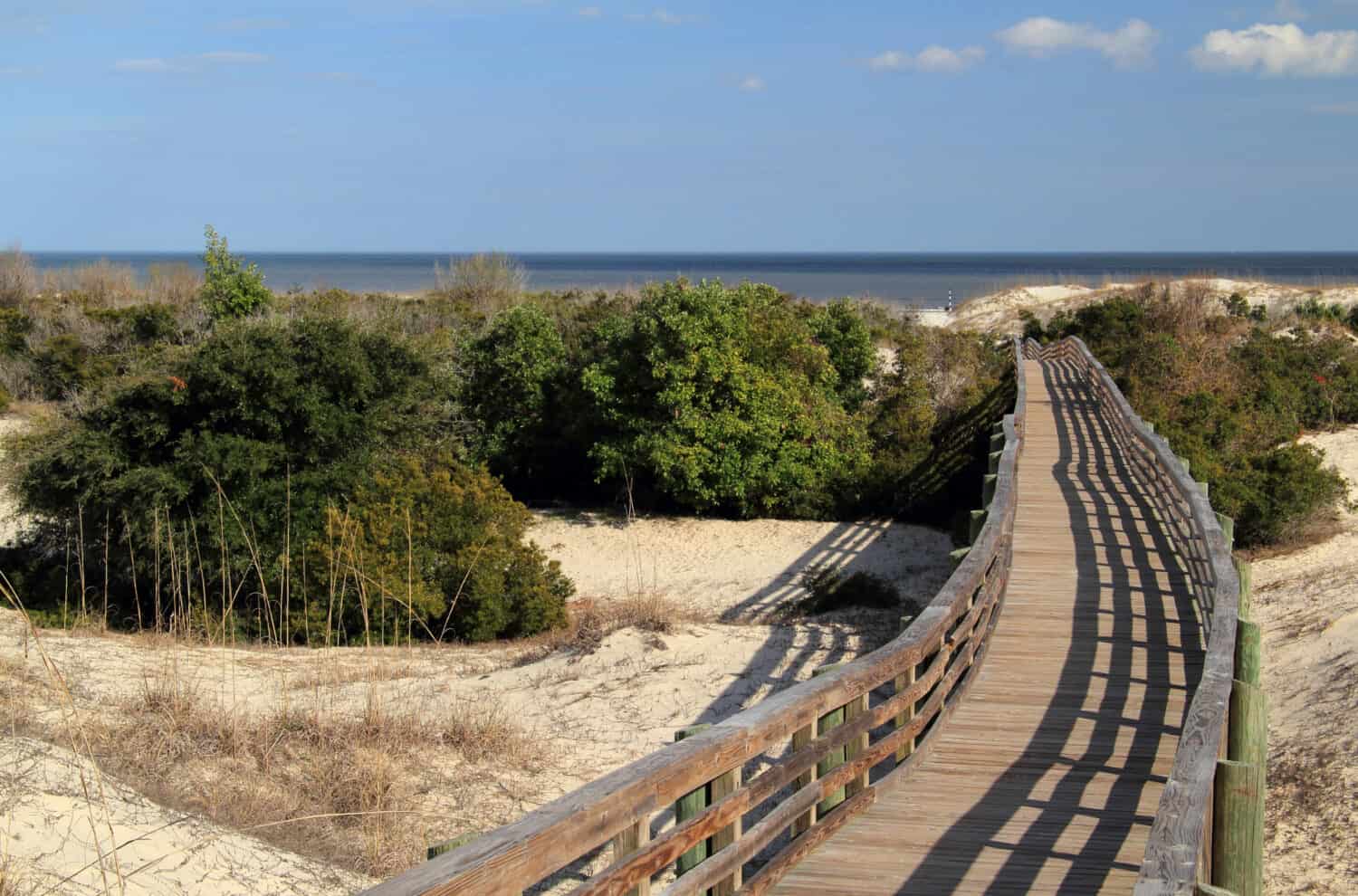
- Density of animal species: 1.3 per 100 acres
- Number of animal species: 504
- Park size: 38,363 acres
- Rarest animal species: Boat-Tailed Grackle, Tarpon Snook, Dwarf Sperm Whale, Red-Cockaded Woodpecker, Mottled Mojarra
18. Congaree National Park (South Carolina)
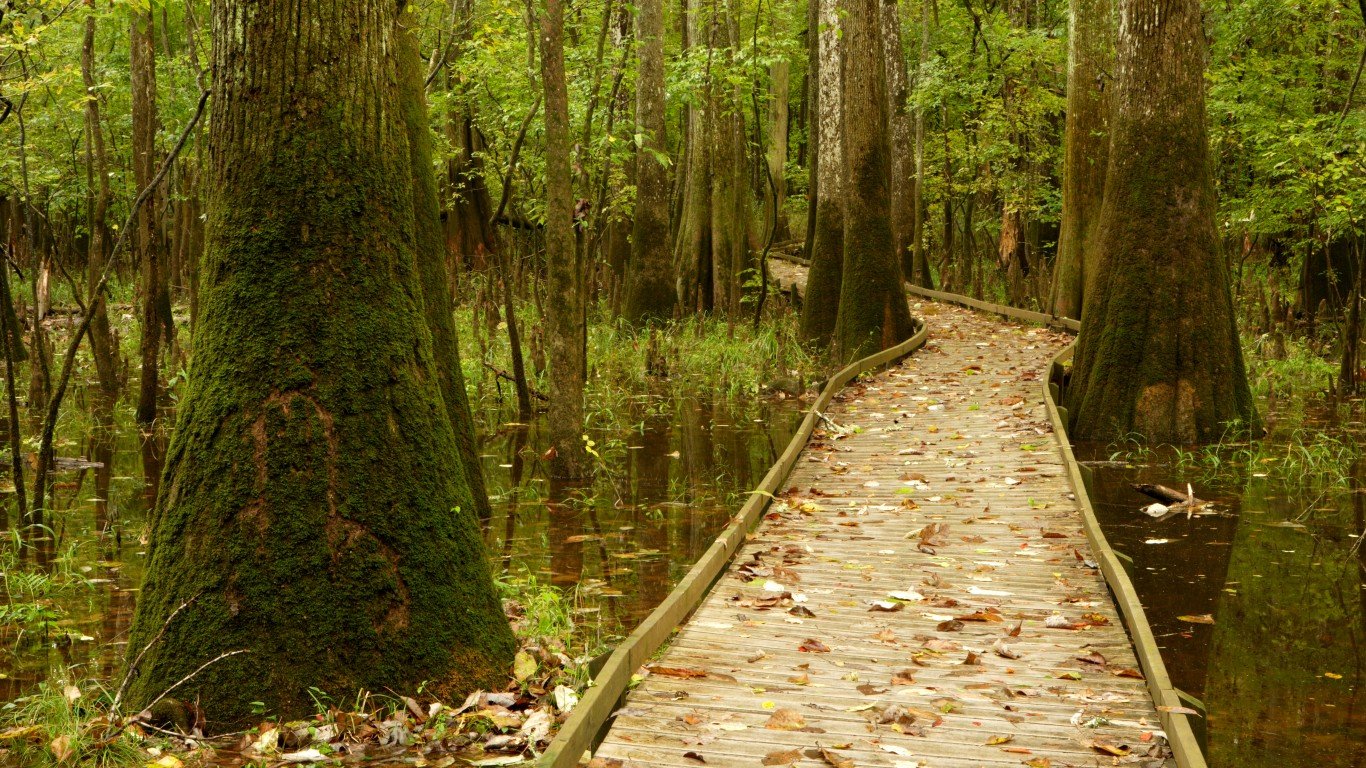
- Density of animal species: 1.4 per 100 acres
- Number of animal species: 367
- Park size: 26,739 acres
- Rarest animal species: Southern Cricket Frog, River Frog, Carpenter Frog, Whitefin Shiner, Dusky Shiner
17. Ebey’s Landing National Historical Reserve (Washington)
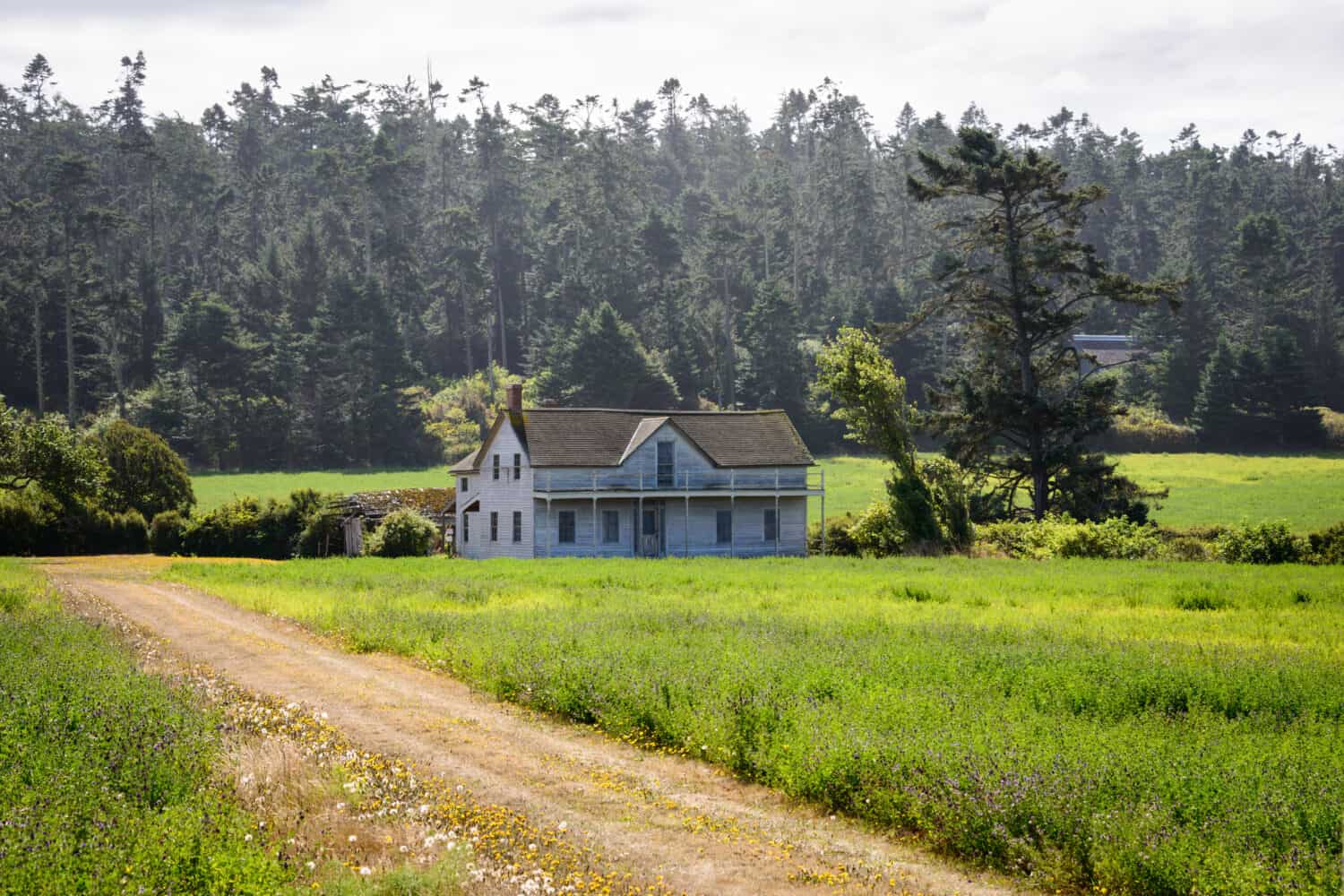
- Density of animal species: 1.5 per 100 acres
- Number of animal species: 263
- Park size: 18,044 acres
- Rarest animal species: Bald Eagle, Pigeon Guillemot, Common Murre, American Herring Gull, Lesser Sandhill Crane
16. City Of Rocks National Reserve (Idaho)
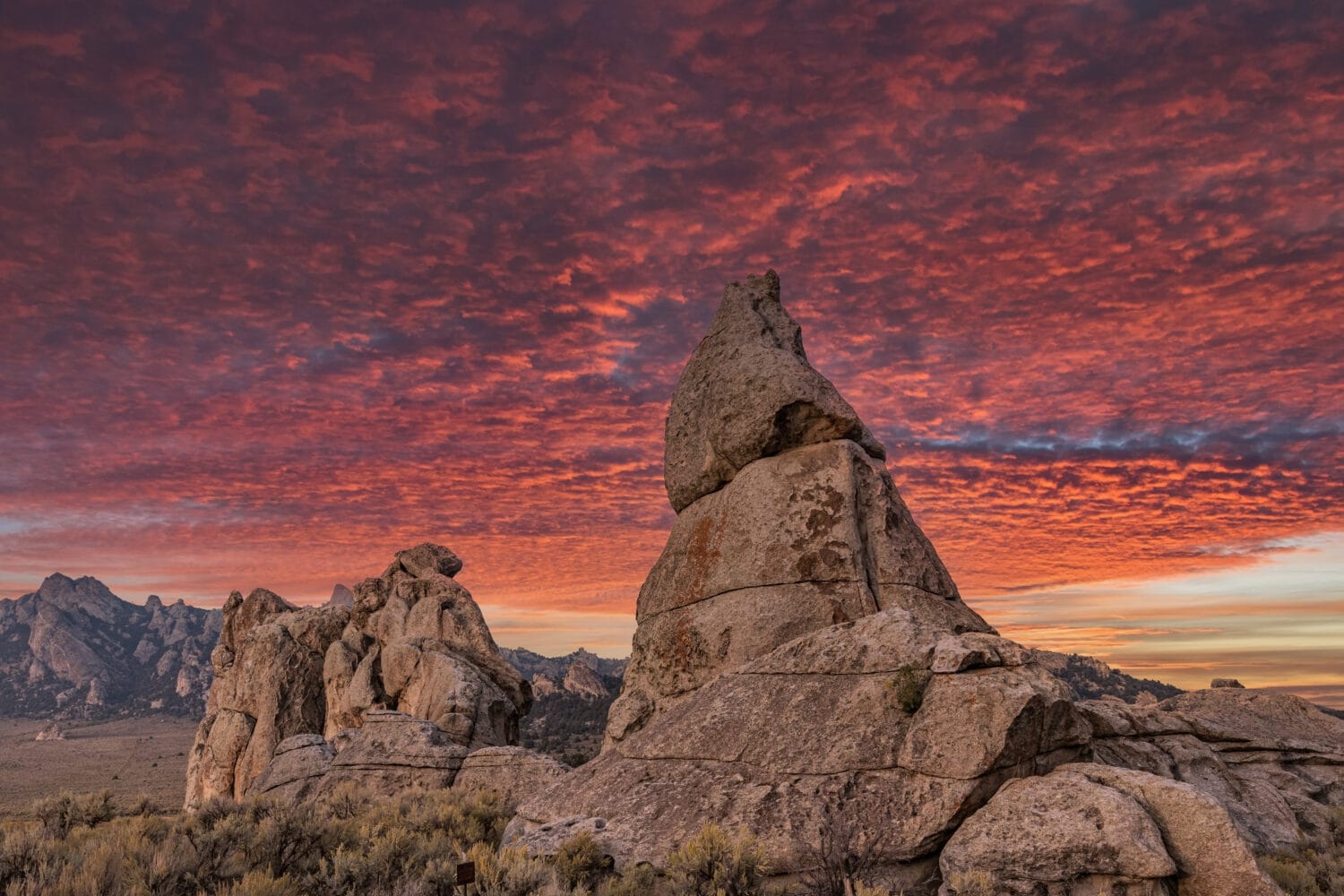
- Density of animal species: 1.6 per 100 acres
- Number of animal species: 240
- Park size: 14,645 acres
- Rarest animal species: Large-Spotted Leopard Lizard, Great Basin, Great Basin Whiptail, Cliff Chipmunk, Great Basin Gopher Snake
15. Chickasaw National Recreation Area (Oklahoma)
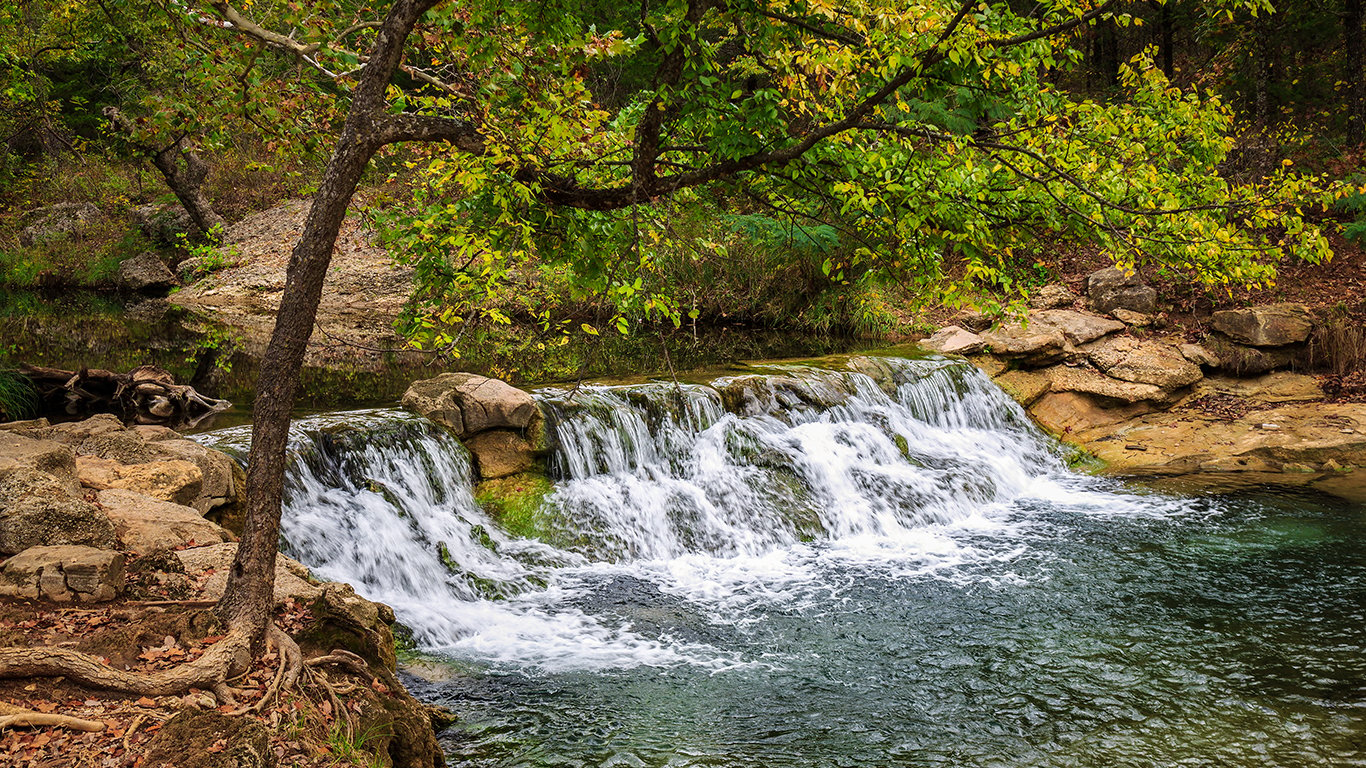
- Density of animal species: 1.8 per 100 acres
- Number of animal species: 178
- Park size: 9,874 acres
- Rarest animal species: Black-Capped Gnatcatcher, Texas Spotted Whiptail, Metter’s Cooter, Attwater’s Mouse, Eastern Collared Lizard
14. Little River Canyon National Preserve (Alabama)
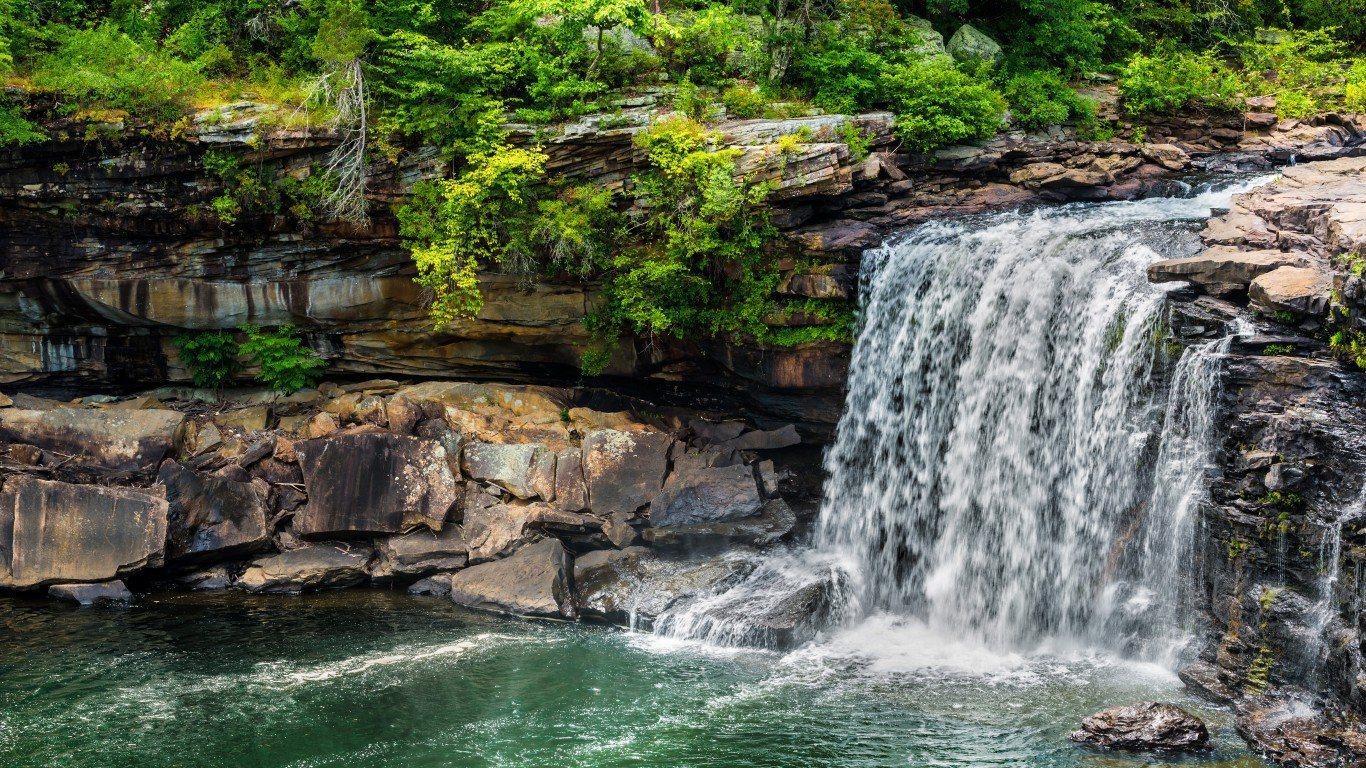
- Density of animal species: 1.8 per 100 acres
- Number of animal species: 278
- Park size: 15,416 acres
- Rarest animal species: Blue Shiner, Tricolor Shiner, Coosa Shiner, Southern Studfish, Coosa Darter
13. Gateway National Recreation Area (New Jersey)

- Density of animal species: 2.0 per 100 acres
- Number of animal species: 538
- Park size: 27,159 acres
- Rarest animal species: Stints, Clapper Rail, European Goldfinch, Redwing
12. Tallgrass Prairie National Preserve (Kansas)
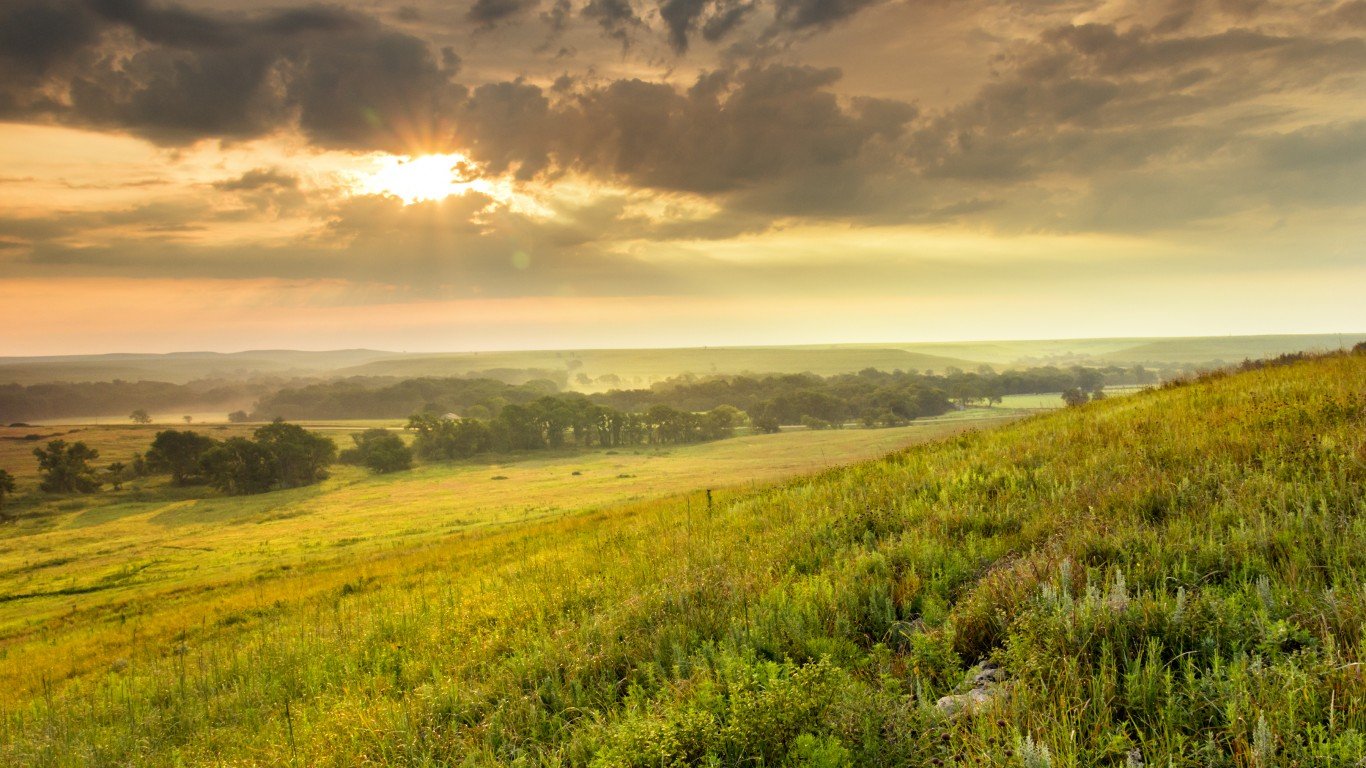
- Density of animal species: 2.2 per 100 acres
- Number of animal species: 240
- Park size: 10,897 acres
- Rarest animal species: Common Earless Lizard, Eastern Massasauga, Great Plains Rat Snake, Sand Shiner
11. Cape Lookout National Seashore (North Carolina)
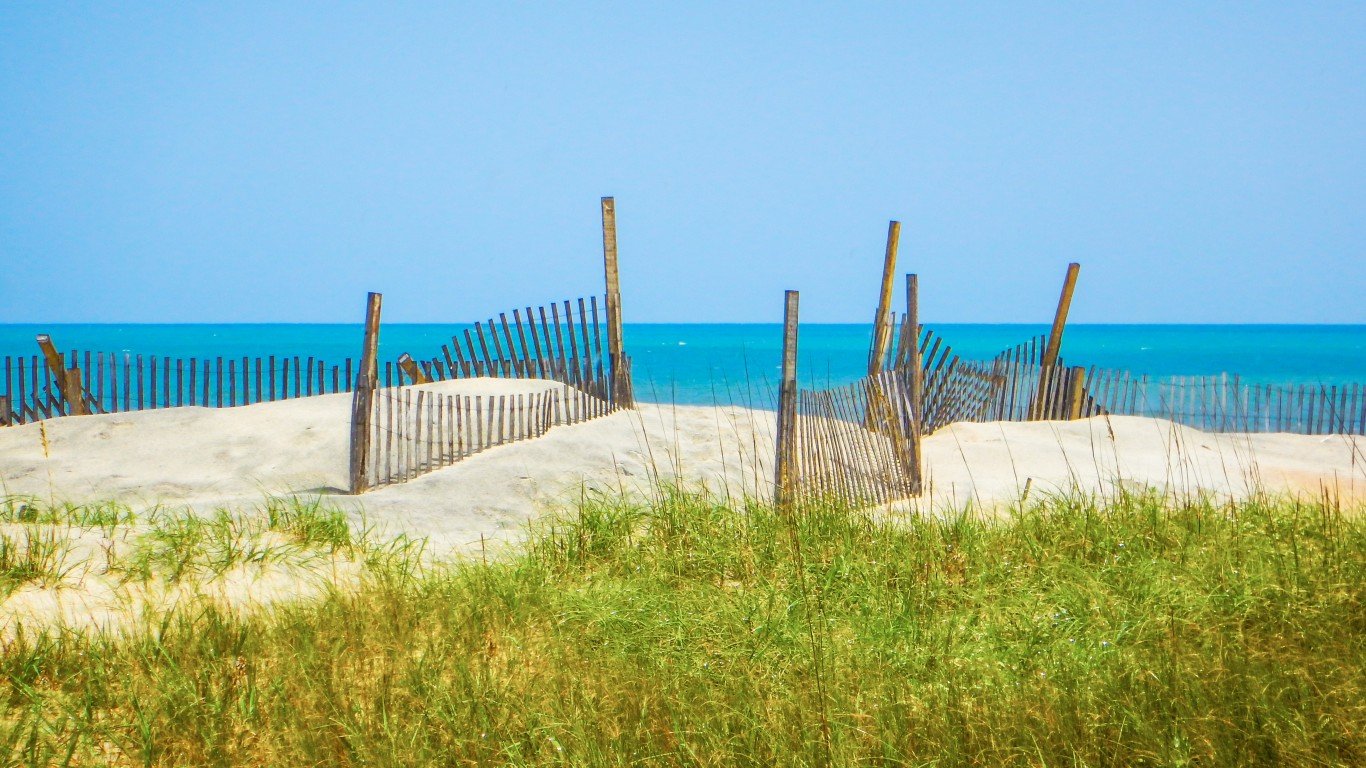
- Density of animal species: 2.2 per 100 acres
- Number of animal species: 627
- Park size: 28,418 acres
- Rarest animal species: Spiny Butterfly Ray, Atlantic Devil Ray, Frigate Mackerel, Whitebone Porgy
10. Fire Island National Seashore (New York)
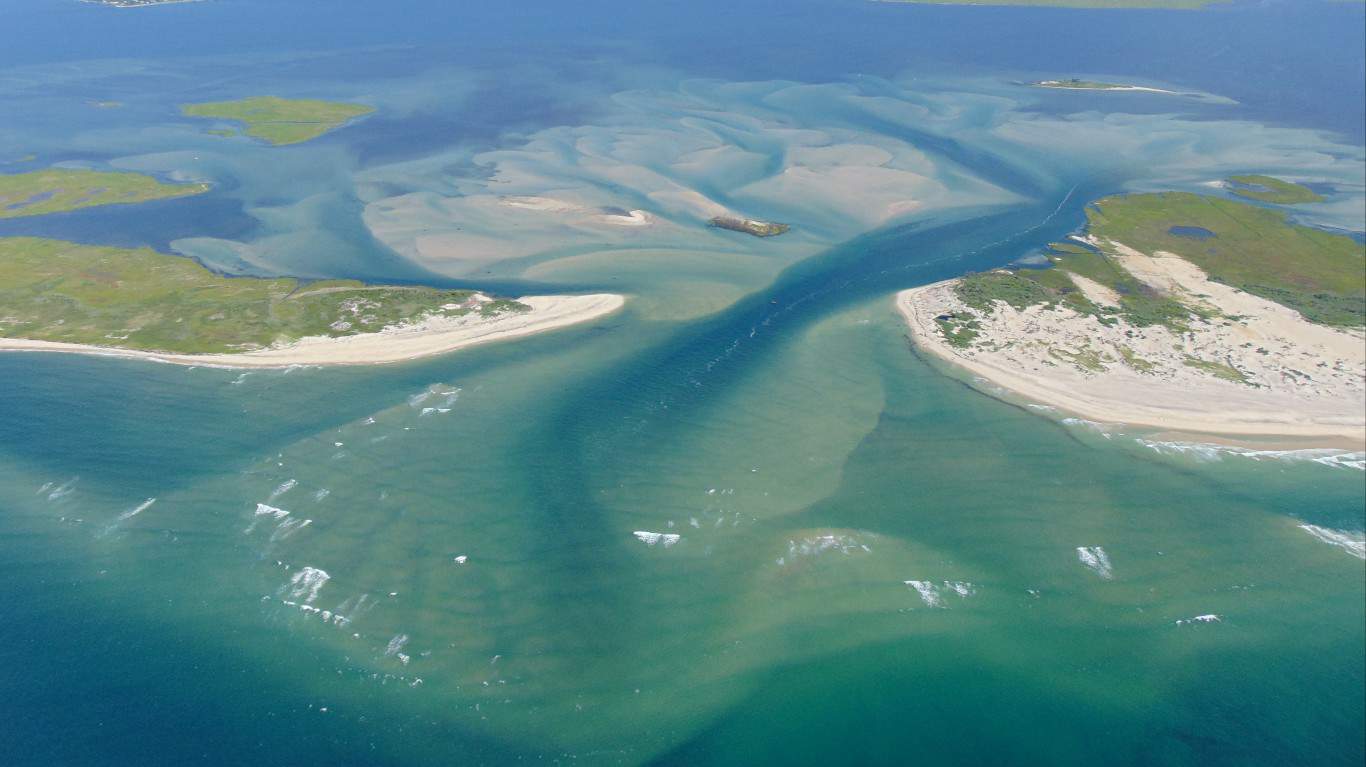
- Density of animal species: 2.2 per 100 acres
- Number of animal species: 441
- Park size: 19,706 acres
- Rarest animal species: Ringed Seal, Winter Flounder, Winter Skate, Harp Seal, Long-Finned Pilot Whale
9. Cape Hatteras National Seashore (North Carolina)
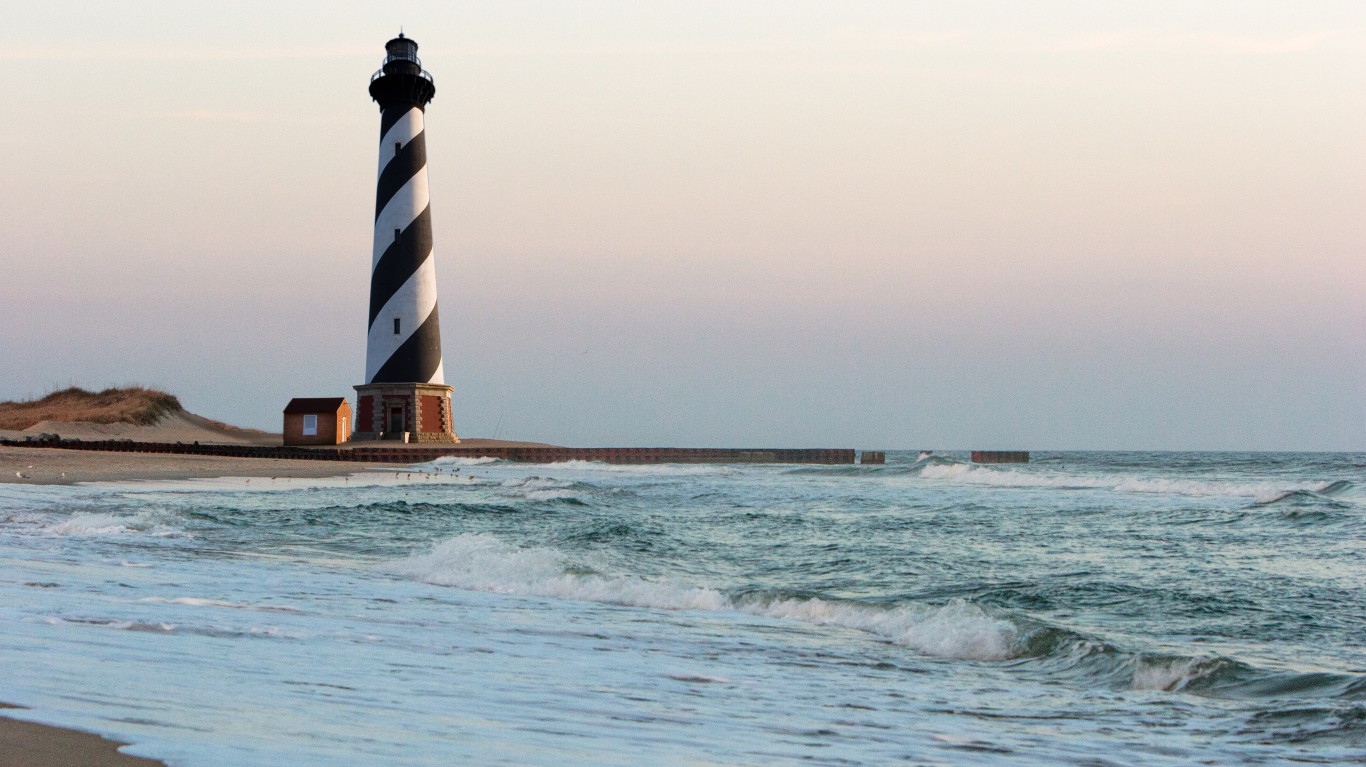
- Density of animal species: 2.4 per 100 acres
- Number of animal species: 756
- Park size: 31,131 acres
- Rarest animal species: Great Skua, White-Faced Storm-Petrel, Black-Capped Petrel, Lichen Moray, Barred Cusk-Eel
8. Gauley River National Recreation Area (West Virginia)
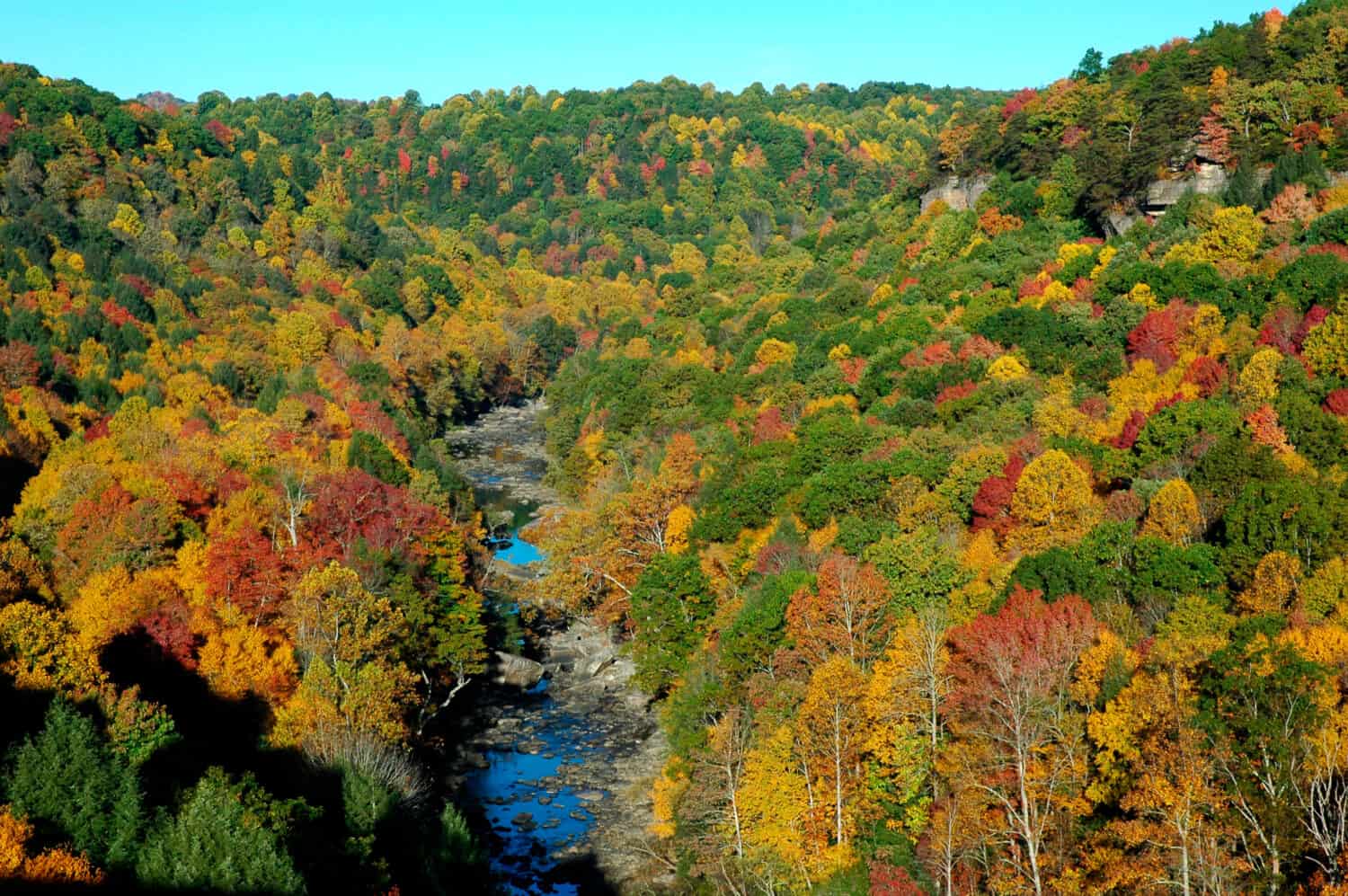
- Density of animal species: 2.5 per 100 acres
- Number of animal species: 276
- Park size: 11,091 acres
- Rarest animal species: Candy Darter, Northern Ravine Salamander, Sharpnose Darter, Bigmouth Chub, Wehrle’s Salamander
7. Indiana Dunes National Park (Indiana)
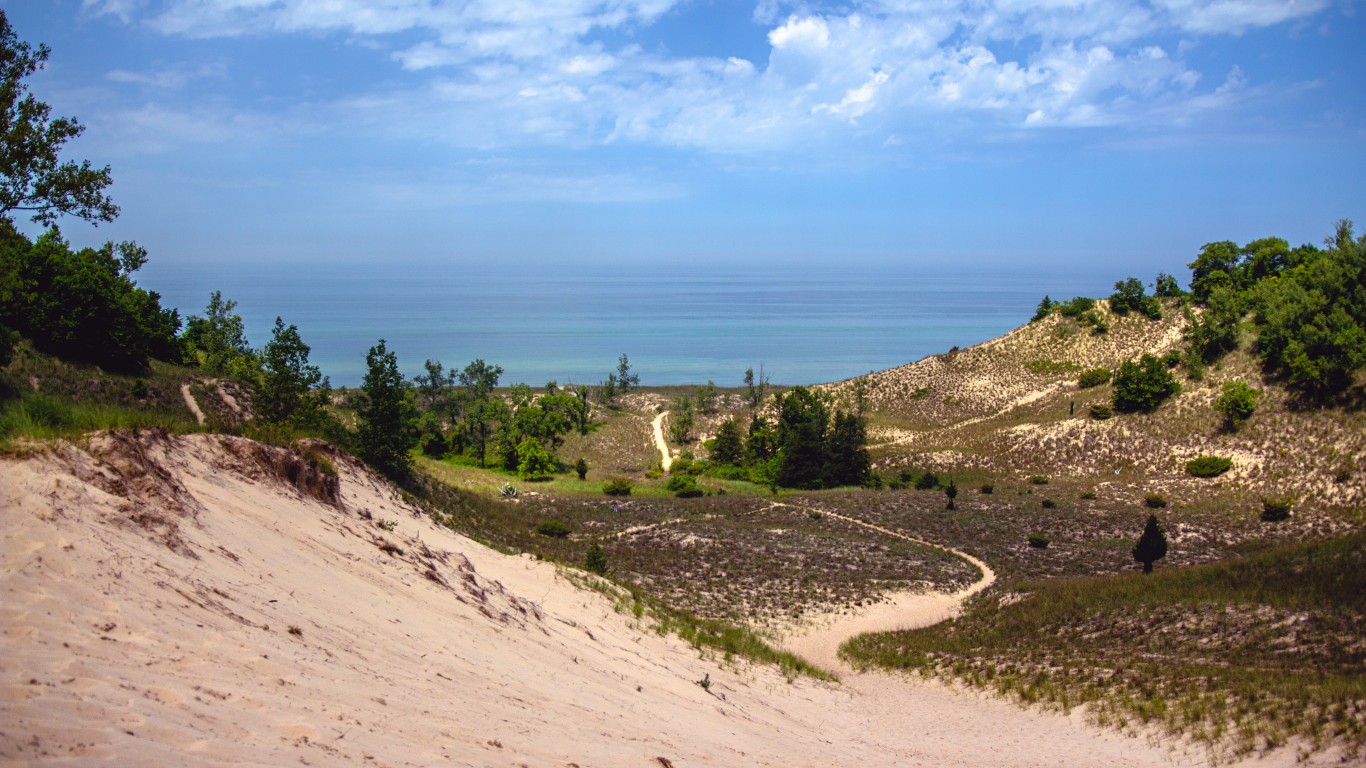
- Density of animal species: 2.8 per 100 acres
- Number of animal species: 459
- Park size: 16,256 acres
- Rarest animal species: Eastern Massasauga, Tremblay’s Salamander, Rudd, Eastern Blue Racer, Northern Ribbon Snake
6. Chattahoochee River National Recreation Area (Georgia)
- Density of animal species: 3.0 per 100 acres
- Number of animal species: 358
- Park size: 11,877 acres
- Rarest animal species: Palm Warbler, Lawrence’s Warbler, Greater Jumprock
5. Boston Harbor Islands National Recreation Area (Massachusetts)
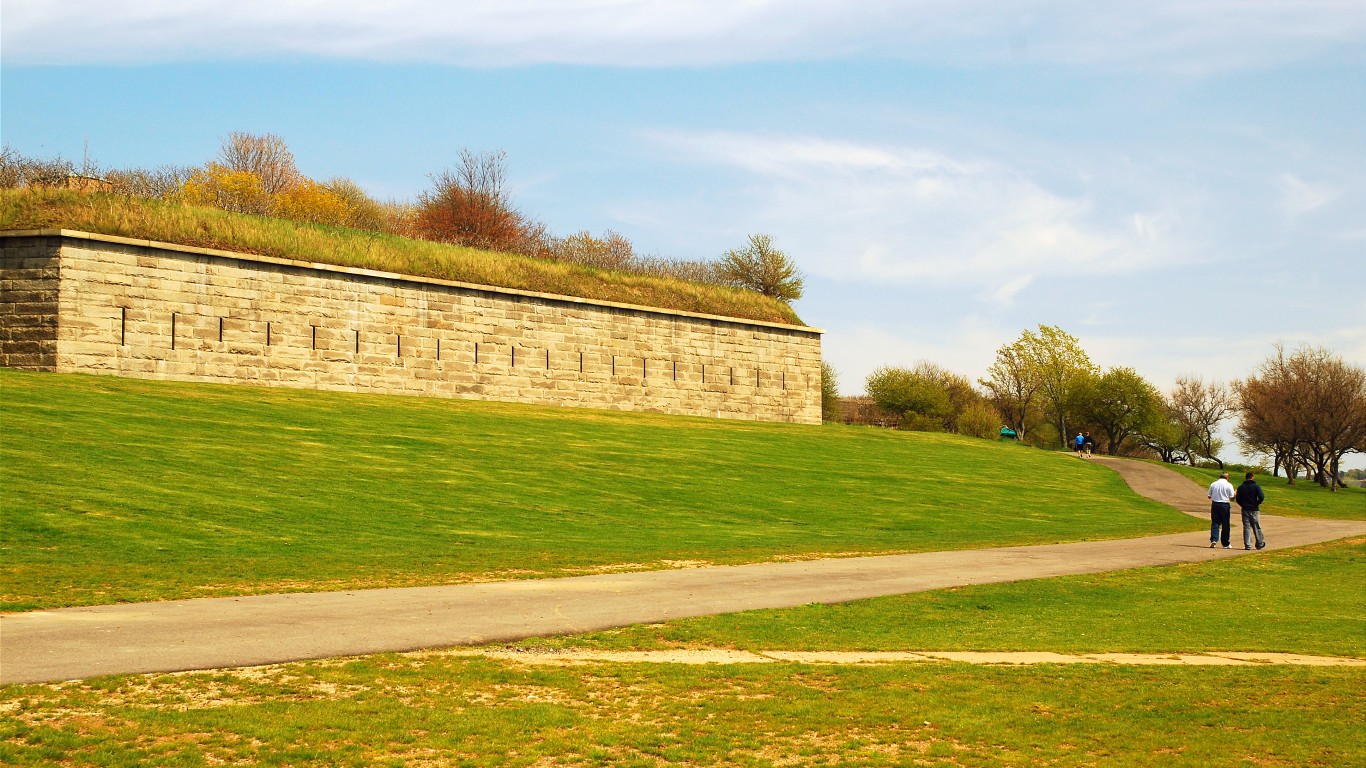
- Density of animal species: 4.5 per 100 acres
- Number of animal species: 99
- Park size: 2,223 acres
- Rarest animal species: European Rabbit, Smooth Green Snake, Common Eider, American Oystercatcher, Great Egret
4. Hot Springs National Park (Arkansas)
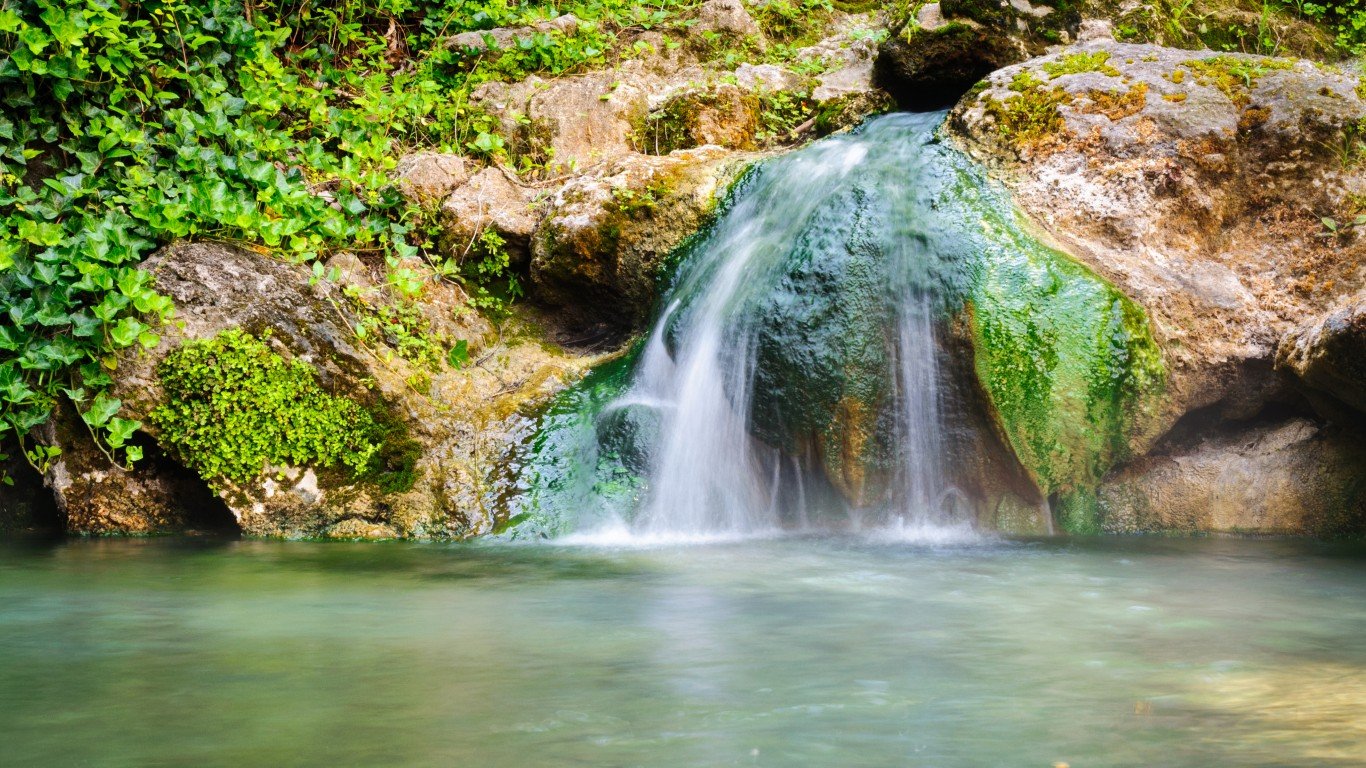
- Density of animal species: 5.2 per 100 acres
- Number of animal species: 282
- Park size: 5,457 acres
- Rarest animal species: Ouachita Dusky Salamander, Creole Darter, Orangebelly Darter, Ouachita Madtom, Broad-Banded Water Snake
3. Bluestone National Scenic River (West Virginia)

- Density of animal species: 5.5 per 100 acres
- Number of animal species: 238
- Park size: 4,317 acres
- Rarest animal species: Allegheny Crayfish, Cumberland Plateau Salamander, Southern Ravine Salamander, Mountain Redbelly Dace, Bigmouth Chub
2. Obed Wild and Scenic River (Tennessee)
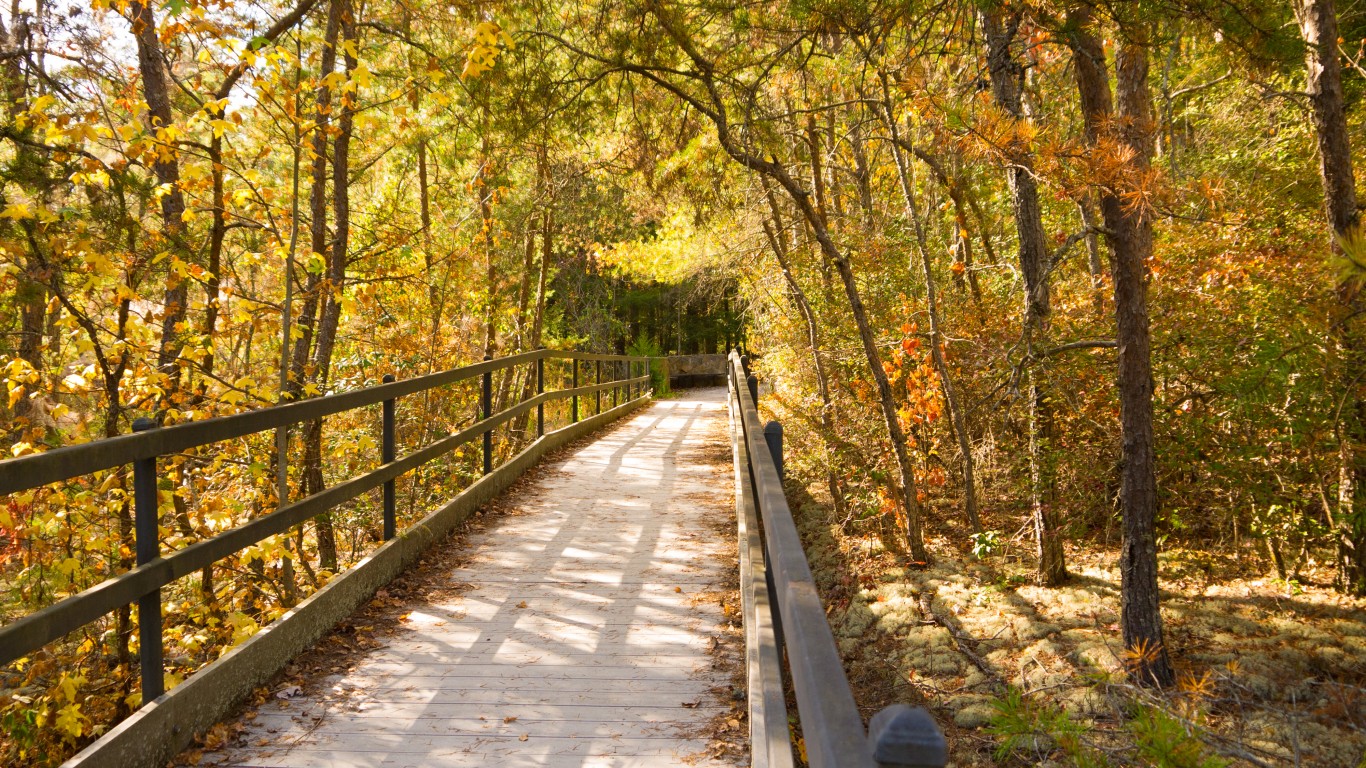
- Density of animal species: 6.2 per 100 acres
- Number of animal species: 334
- Park size: 5,410 acres
- Rarest animal species: Cumberland Dusky Salamander, Muskellunge, Ashy Darter, Sickle Darter, Hairyfoot Crayfish
1. George Washington Memorial Parkway (Maryland)
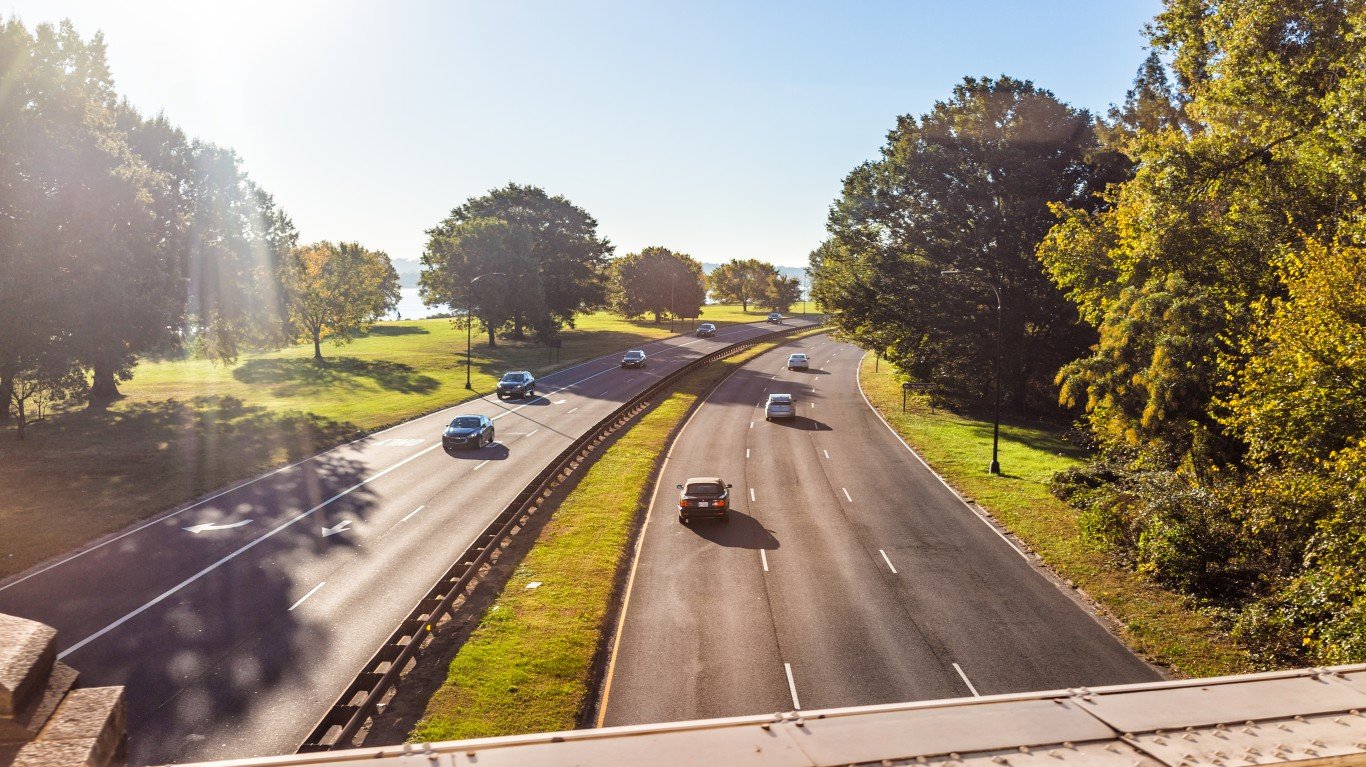
- Density of animal species: 7.2 per 100 acres
- Number of animal species: 478
- Park size: 6,601 acres
- Rarest animal species: Skunks, Barnacle Goose, White-Winged Scoter, Golden-Plovers, Little Gull
